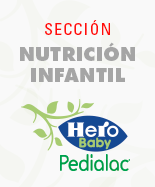Resumen
Objetivos: 1) Divulgar la neurotoxicidad del humo del tabaco, alcohol y otros solventes, flúor y algunos aditivos alimentarios, y 2) recomendar las medidas preventivas para minimizar/eliminar su exposición.
Materiales y métodos: Revisión bibliográfica sistemática de los efectos en el sistema nervioso central (SNC) en desarrollo. Búsqueda en MEDLINE, Science Citation Index y Embase de los trabajos observacionales de exposición a bajas dosis en humanos y de experimentación en animales de los últimos 10 años.
Resultados: 1) El tabaquismo activo y pasivo de las madres gestantes provoca trastornos del aprendizaje, déficit de atención y del cociente intelectual (CI) persistente, y está asociado con un menor rendimiento académico en la descendencia; 2) la exposición fetal a bajas dosis de alcohol se ha asociado con hiperactividad, trastornos de atención, de aprendizaje y deterioro de la memoria en la descendencia; 3) la exposición a solventes por hobbies o aficiones en el hogar puede ser un factor de riesgo considerable, especialmente en áreas mal ventiladas; 4) estudios en animales y humanos sugieren que la exposición al flúor, a los niveles a que se expone la población por fluoración del agua potable y otros suplementos, puede tener efectos adversos sobre el neurodesarrollo, y 5) en animales de experimentación los efectos neurotóxicos por aspartamo y glutamato requieren dosis mucho mayores que las de la dieta humana.
Conclusiones: 1) El SNC fetal e infantil es especialmente vulnerable a la exposición a bajas dosis de humo de tabaco y alcohol; 2) no existe un nivel seguro de exposición ni para el tabaco ni para el alcohol; 3) el registro en la consulta de los hobbies o aficiones en el hogar con solventes permitirá detectar familias en riesgo; 4) los suplementos de flúor sólo están indicados en poblaciones de riesgo; 5) la relación entre la dieta y el comportamiento en niños con trastornos de déficit de atención e hiperactividad es incierta, y 6) la historia ambiental pediátrica es necesaria para avanzar en el conocimiento y en los aspectos preventivos, pronósticos y evolutivos de las enfermedades relacionadas con estas exposiciones.
Abstract
Objectives: 1) To make pediatricians aware of the neurotoxicity of: a) tobacco smoke, b) alcohol and other solvents, c) fluoride, and d) certain food additives; and 2) to recommend preventive measures to minimize/eliminate fetal and postnatal exposure.
Materials and methods: A systematic review of the literature was conducted to explore the toxic effects of these substances on the fetal and postnatal nervous system. The authors carried out a search for the observational studies on low-dose exposure in humans and laboratory animals indexed over the past 10 years in Medline, the Science Citation Index and Embase.
Results: 1) The exposure of women to firsthand and secondhand cigarette smoke during pregnancy leads to learning disa¬bilities, persistent attention deficits and a low intelligence quotient (IQ) in their children, resulting in poorer academic performance. 2) Fetal exposure to low doses of alcohol is associated with hyperactivity, attention and learning deficits, and poor memory in the child. 3) Exposure to solvents employed in hobbies and pastimes in the home can be a considerable risk factor, especially in poorly ventilated areas. 4) Animal and human studies suggest that exposure to fluoride, at levels similar to those found in fluoridated drinking water, and to other supplements can have adverse effects on neuronal development. 6) In animal studies, the adverse effects of aspartame and glutamate are produced at much higher doses than those found in the human diet.
Conclusions: 1) The fetal and postnatal central nervous system is especially vulnerable to low-dose exposure to cigarette smoke and alcohol. 2) There are no threshold levels of exposure for cigarette smoke and alcohol. 3) During well-child visits, the recording of pastimes and hobbies that involve the use of solvents enables the detection of families at risk. 4) Fluoride supplements are indicated only in populations at risk. 5) The relationship between diet and the behavior of children with attention deficit hyperactivity disorder (ADHD) is unclear. 6) The Pediatric Environmental History (PEH) is necessary to expand our knowledge of the health hazards related to these exposures in terms of prevention, prognosis and outcome.















